#digital Signage
Explore tagged Tumblr posts
Text
How LED Signage Is Revolutionising Outdoor Advertising
Summary LED signage is changing the face of outdoor advertising by offering brighter displays, lower running costs, better customization, and increased engagement. Businesses across sectors are now turning to digital signage solutions to stand out and connect with audiences more effectively. In this article, we explore how LED technology works, why it’s gaining popularity, and how it compares to traditional outdoor signage. We also discuss the growing demand for digital signage in Staffordshire and how local businesses can benefit from this shift.
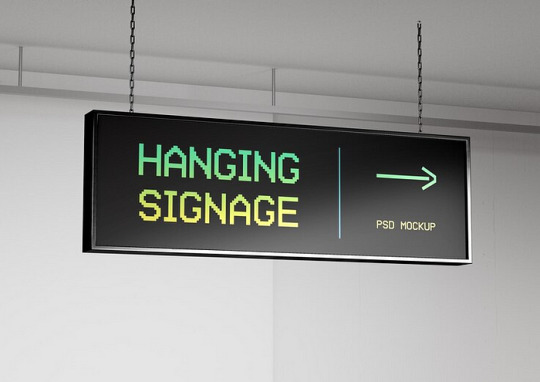
What makes LED signage different from traditional signs?
Traditional signs rely on static graphics printed on materials like vinyl or metal. They’re effective but limited. Once printed, the design can’t be changed without replacing the entire sign. LED signage, on the other hand, uses light-emitting diodes (LEDs) to create dynamic content that can be updated anytime.
This technology allows businesses to show video, animations, and real-time updates. You can switch between messages, run multiple ads in rotation, or display time-sensitive offers — all from a remote device.
Why is LED signage gaining popularity?
There are a few key reasons behind the rapid rise of LED signage in outdoor advertising:
Greater visibility — LED signs are brighter and more eye-catching, even in direct sunlight.
Energy efficiency — LEDs use less power than traditional lighting, which reduces running costs.
Durability — Outdoor LED screens are built to withstand weather conditions like rain, wind, and snow.
Remote control — Content can be managed from anywhere via software, saving time and effort.
Dynamic content — Unlike static signs, LED displays can show different messages at different times of day or week.
These benefits make LED signage especially appealing to businesses that want to stay agile and competitive.
How effective is LED signage in driving engagement?
The statistics speak for themselves:
According to the Outdoor Advertising Association of America (OAAA), digital billboards increase brand awareness by 47% compared to static signs.
71% of people say they often look at roadside digital signage (Nielsen).
A study by Intel found that digital displays capture 400% more views than static signage.
This makes LED signage an excellent option for attracting attention in high-traffic areas — whether that’s a city centre, a retail park, or near a major roadway.
Where is LED signage being used?
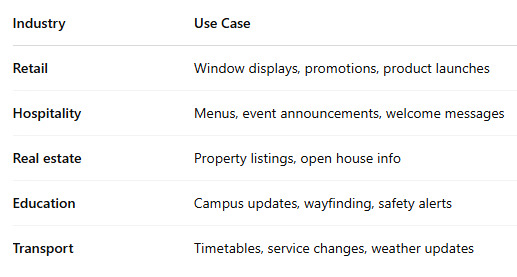
How does LED signage improve ROI?
LED signage might seem expensive at first, but it pays off in the long run:
Low maintenance — LED lights last up to 100,000 hours, reducing repair and replacement costs.
Targeted messaging — Schedule your ads to run during peak hours for maximum exposure.
Multiple ads on one screen — Rotate different campaigns without printing new material.
Increased foot traffic — Better visibility and engagement often lead to more in-store visits.
These factors combine to offer a much higher return on investment compared to traditional signage.
Is LED signage environmentally friendly?
Yes. One of the lesser-known benefits of LED signage is its lower environmental impact:
LED lights consume 75% less energy than incandescent bulbs.
There’s no need to print and dispose of vinyl or paper graphics regularly.
Content updates are digital, cutting down on waste and transport emissions.
For businesses aiming to reduce their carbon footprint, LED signage is a smart choice.
What does installation and setup look like?
The process usually includes:
Site survey — A technician checks the location and measures dimensions.
Custom design — The digital display is tailored to fit the space and business needs.
Hardware setup — Technicians install the screen, wiring, and mounting equipment.
Software setup — Content management systems (CMS) are installed for easy control.
Training — Businesses learn how to update and schedule their content.
The process is quick and minimally disruptive. Once installed, updates are as easy as sending an email or using a phone app.
What should businesses consider before switching to LED signage?
Before investing in LED signage, think about:
Location — Is the sign in a spot with high visibility and foot traffic?
Size — Make sure it’s large enough to be seen from the intended viewing distance.
Content strategy — Plan your messages to maximise the value of dynamic content.
Compliance — Check local council rules about digital advertising screens.
Budget — Consider long-term cost savings, not just initial setup fees.
Working with an experienced signage provider ensures these points are addressed upfront.
What’s the future of outdoor advertising?
The shift to digital is accelerating. A report from MarketsandMarkets predicts the global digital signage market will grow from $20.8 billion in 2023 to $29.6 billion by 2027. LED technology will be a major driver of that growth.
We’re also seeing trends like:
Interactive signage — Touchscreens and motion sensors to boost engagement.
Real-time data — Displaying weather, news, or social media feeds.
AI integration — Personalised ads based on audience demographics or location.
Outdoor advertising is no longer about putting up a sign and hoping for the best. It’s becoming smarter, more responsive, and more powerful.
Final thoughts
LED signage is transforming how businesses approach outdoor advertising. It offers dynamic content, better visibility, lower long-term costs, and a higher return on investment. For businesses in Staffordshire looking to stay ahead, digital signage Staffordshire is more than just a trend — it’s a strategic advantage.
If you’re ready to upgrade your signage, Hardy Signs in Staffordshire (DE14 1LS) has the experience, technology, and customer-first approach to help you make a lasting impression.
3 notes
·
View notes
Text

Disploy is a powerful digital signage software that allows you to easily deploy and manage content for your business on any screen or TV. Enhance your workplace, gym, school, or store with stunning visuals. Sign up for a free trial today!
2 notes
·
View notes
Text


1. Introduction to Front-Lit Flex and Fabric What is Front-Lit Flex? Front-Lit Flex is a kind of signage cloth normally used in outside marketing. It is characterized by its capability to emit mild from the the front floor, supplying high visibility even in low light situations.
Importance of Front-Lit Flex in Advertising Front-Lit Flex plays a crucial role in outdoor advertising campaigns, allowing brands to showcase their message effectively to a wide audience.
2. Understanding Front-Lit Flex Technology How does Front-Lit Flex Work? Front-Lit Flex utilizes a combination of translucent materials and LED lighting to illuminate the signage from the front. This technology ensures maximum visibility and impact, even during nighttime.
Types of Front-Lit Flex Materials Front-Lit Flex materials come in various forms, including PVC-based flex banners, fabric-based materials, and mesh substrates. Each type offers unique advantages depending on the specific application.
3. Applications of Front-Lit Flex and Fabric Front-Lit Flex and Fabric find extensive use across diverse industries due to their versatility and effectiveness in outdoor advertising.
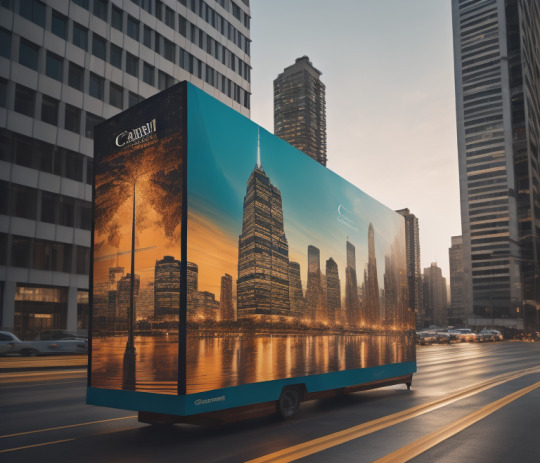
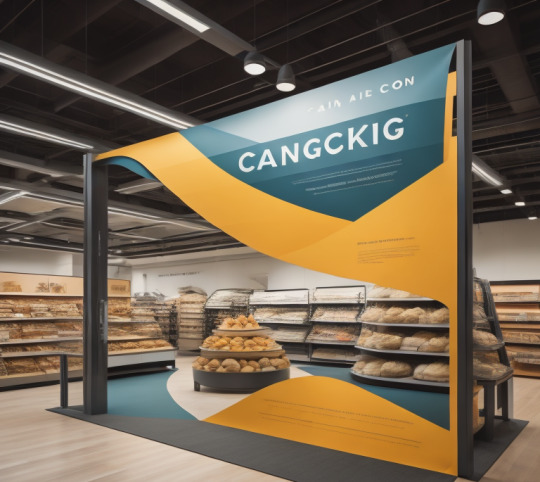
Event Banners For events, festivals, and trade shows, Front-Lit Flex banners serve as eye-catching displays, attracting attendees and conveying important information effectively.

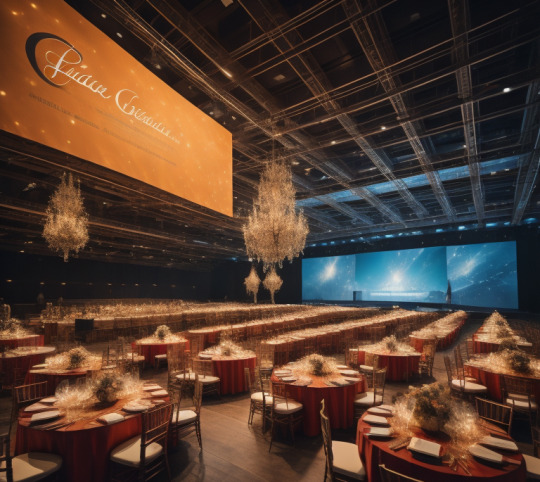
Customization and Design Flexibility Front-Lit Flex and Fabric offer endless possibilities for customization, allowing brands to create unique and engaging signage solutions tailored to their specific requirements.
5. Factors to Consider When Choosing Front-Lit Flex Materials Location and Environment When selecting Front-Lit Flex materials, it’s essential to consider the location and environmental factors to ensure optimal performance and longevity.
Size and Scale The size and scale of the signage play a crucial role in determining the type of Front-Lit Flex material required, as larger installations may require more robust and durable materials.
Budget and Cost-effectiveness While Front-Lit Flex offers numerous advantages, it’s essential to balance performance with budget considerations to achieve the best possible return on investment.
6. Case Studies: Successful Implementations of Front-Lit Flex Examples from Various Industries From retail giants to small businesses, Front-Lit Flex has been successfully implemented across various industries, driving brand awareness and engagement.
7. Future Trends in Front-Lit Flex Technology Innovations and Developments The future of Front-Lit Flex technology holds exciting possibilities, with ongoing innovations in materials, lighting, and digital integration.
Integration with Digital Technologies The integration of Front-Lit Flex with digital technologies such as augmented reality and interactive displays is poised to revolutionize the advertising landscape, offering immersive and interactive experiences for consumers.
8. Conclusion Front-Lit Flex and Fabric represent a dynamic and versatile solution for modern advertising needs. With their unparalleled visibility, durability, and customization options, they continue to redefine the way brands communicate with their audience. As technology advances and consumer expectations evolve, Front-Lit Flex remains at the forefront of innovation, offering endless possibilities for creative expression and brand promotion.
9. FAQs 1. What are the main advantages of Front-Lit Flex signage? Front-Lit Flex signage offers high visibility, durability, and customization options, making it ideal for outdoor advertising campaigns.
2. How long do Front-Lit Flex materials typically last? With proper maintenance, Front-Lit Flex materials can last for several years, making them a cost-effective investment for businesses.
3. Can Front-Lit Flex be used for indoor signage? Yes, Front-Lit Flex is suitable for indoor signage applications such as retail displays, exhibition booths, and event banners.
4. Is Front-Lit Flex environmentally friendly? Many Front-Lit Flex materials are recyclable and contribute to sustainable advertising practices, reducing environmental impact.
5. Are there any limitations to Front-Lit Flex technology? While Front-Lit Flex offers numerous advantages, it may not be suitable for all environments or applications, requiring careful consideration of factors such as size, location, and budget.
#front-lit flex#front-lit fabric#outdoor advertising#signage#billboards#building wraps#digital signage#vehicle signage#LED signage
2 notes
·
View notes
Text
youtube
Smart Board Supplier | Cheap Interactive Flat Panel | Low Budget Interactive Whiteboard. WhatsApp:https://wa.me/008618578623258.
Interactive flat panels are revolutionizing the way we collaborate and communicate in various settings, from classrooms to corporate environments. As a leading supplier, we offer a range of high-quality interactive flat panel displays designed to enhance engagement and interactivity. Our products feature advanced touch technology, vibrant displays, and seamless connectivity options, making them ideal for presentations, teaching, and brainstorming sessions. With user-friendly interfaces and robust software compatibility, our interactive panels cater to diverse needs, ensuring an immersive experience. Partner with us to elevate your visual communication and transform your collaborative efforts with cutting-edge interactive solutions.
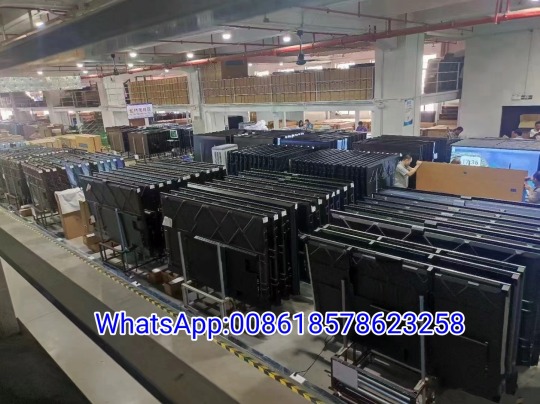
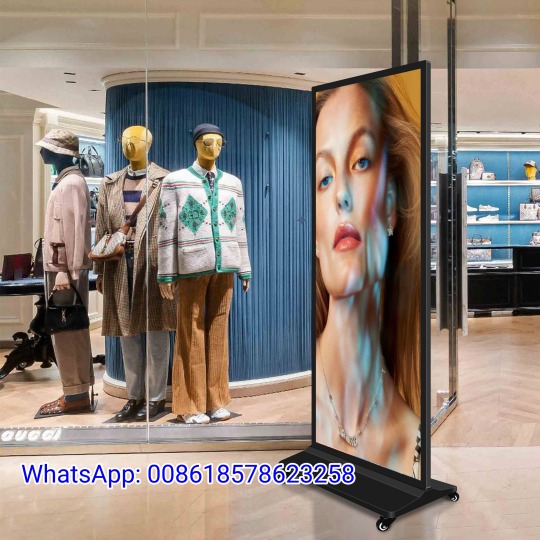
#Digital Signage#digital signage software#digital signage displays#digital board for teaching#digital signage and displays#totem touch screen#Digital Signage and Kiosk#Visual Solutions#commercial display#Education Digital Signage#Digital Signage Display System#Digital Signage Products and Solutions#Digital Signage Customized#Intelligent Digital Signage Solutions#Innovative Digital Signage System#digital signage solutions#digital signage companies#smart baord for teaching#inertactive flat panel for meeting#Touch sreen for Classroom
2 notes
·
View notes
Text

At EuroCIS 2024, eyefactive presented groundbreaking and innovative touchscreen solutions that redefine the retail experience.
Read the full press release here:
eyefactive, the pioneer in interactive touchscreen solutions, unveiled its latest innovations at EuroCIS 2024, Europe's premier trade fair for retail technology, held from February 27 to February 29 at Messe Düsseldorf.
eyefactive introduced a 55'' PCAP touchscreen with optical bonding, ultra-high brightness and object recognition technology.
The multitouch app ShoppingAssistant offered omni-channel integration, staff compensation and expanded product range in stores.
eyefactive demonstrated its expertise by collaborating with esteemed partners like Extenda Retail AB, diz kiosk BV and Pyramid Computer GmbH.
#digitalsignage#touchscreensoftware#touchsoftware#multitouch#omnichannel#retail#retailtechnology#customerexperience#touchscreens#multitouchsoftware#eurocis2024#eurocis#digital signage#interactivesignage#touchtablesoftware#touchtables
2 notes
·
View notes
Text
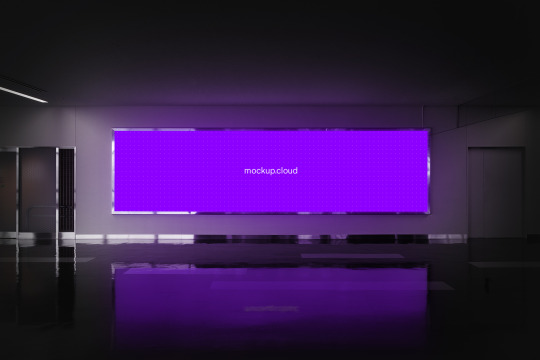




Urban Advertising Mockups
36 advertising PSD mockup templates featuring billboards, signboards, light boxes, digital screens, and posters: natural photography, unique locations, advanced lighting, and reflections.
⚡️ Download
#mockup#branding#psd#template#mockupcloud#download#billboard#screen#digital signage#digital screen#advertising#subway#free#freebie#sign#signboard#neon#urban
5 notes
·
View notes
Text
Benefits of Education Digital Signage for Modern Institutions Enhancing Communication with Digital Signage:
Imagine an environment where traditional bulletin boards are replaced with modern digital screens, offering engaging and educational content. In this blog, we’ll delve into the benefits of education digital signage. We will take a look at its adaptability, scalability, and potential to enhance the overall learning environment.
Efficient and Flexible Communication:
Real-Time Information Access:
Digital signage in schools transforms communication by providing real-time updates on announcements, schedules, and activities. This ensures that everyone in the educational community stays informed at all times.
Adaptability to Changing Communication Needs:
Unlike traditional communication methods, digital signage effortlessly adapts to evolving communication requirements. Whether it’s delivering emergency notifications or accommodating last-minute schedule changes, digital signage has you covered.
Wide Reach with Minimal Effort:
Comprehensive Communication Coverage:
Digital signage reaches all members of the educational community, including students, staff, and visitors. This eliminates the need for multiple communication channels and ensuring that information is disseminated effectively.
Reduced Administrative Burden:
By streamlining communication, digital signage reduces the administrative workload, and information is delivered more efficiently.
Multimedia Communication Possibilities:
Engaging Visual Content:
Digital signage enhances communication by incorporating videos and animations, creating visually appealing experiences that captivate viewers and enhance understanding.
Improved Information Retention:
The use of visual content improves information retention among students, making learning more engaging and effective.
Time Efficiency:
Instant Updates and Alerts:
Digital signage ensures timely updates during emergencies, minimizing response times and enhancing overall safety and preparedness.
Optimized Time Management:
By eliminating delays associated with traditional communication channels, digital signage maximizes time utilization, ensuring that information is delivered promptly.
Institution Branding:
Promotion of Achievements and Events:
Digital signage serves as a powerful tool for promoting school events and showcasing accomplishments, fostering a sense of pride and identity within the educational institution.
Building Community Spirit:
By promoting a sense of belonging and community pride, digital signage contributes to the development of a strong school spirit and a welcoming environment.
Flexibility and Customization:
Tailored Communication:
Digital signage allows for customized content tailored to specific audiences or occasions, ensuring that the right message reaches the right people at the right time.
Adaptability to Various Communication Scenarios:
With its flexible platform, digital signage accommodates a wide range of communication scenarios, from daily announcements to special events, providing a versatile communication solution for educational institutions.
Integration with Social Media:
Enhanced Community Engagement:
By integrating social media updates into digital signage, educational institutions enhance engagement and connectivity.
Promotion of School Culture:
Social media integration promotes school culture and identity, bridging the gap between the physical and virtual worlds. This fosters a sense of belonging among students as well as stakeholders.
Enhanced Campus Navigation:
Interactive Maps and Directions:
Digital signage facilitates navigation through interactive maps and directional information, providing visitors and students with easy access to locations.
Improved Visitor Experience:
By providing clear directions and navigation aids, digital signage enhances the overall visitor experience, reducing confusion and ensuring a smooth navigation process.
Interactive Visual Education:
Dynamic Learning Environments:
Digital signage transforms learning environments by incorporating visual content, such as educational videos, making learning more engaging and interactive.
Enhanced Knowledge Retention:
Interactive visual elements improve knowledge retention among students, allowing them to grasp complex concepts more effectively and retain information for longer periods.
The Technology-Led Solution:
Where the education sector keeps evolving, digital signage emerges as a technology-led solution to address the diverse communication needs of educational institutions. By integrating advanced features and customizable content, digital signage transforms traditional communication methods and enhances the overall learning experience.
Meeting Evolving Educational Needs:
Digital signage serves to be the most adaptable in the educational environment, providing real-time updates, engaging content, and flexible communication solutions. Our Software-as-a-Service (SaaS)-based digital signage system is designed to meet the evolving needs of educational institutions, ensuring agility, reliability, and cost-effectiveness.
Future-Proof Digital Signage Solutions with Wauly:
As technology continues to evolve, digital signage remains at the forefront of innovation in education, offering a forward-thinking approach to communication and engagement. Connect with us to explore how the benefits of education digital signage can transform your institution and enhance the learning experience overall.
0 notes
Text
Digital Signage Software for Smart TV: A Complete Guide to TV Content Management Systems

In today’s fast-paced digital environment, businesses and organizations are constantly looking for innovative ways to capture attention, deliver messages, and enhance customer engagement. One of the most effective tools for this is digital signage software for Smart TV. Whether you’re running a retail store, hotel, corporate office, or educational institution, a robust TV content management system can revolutionize how you display and manage content.
In this blog, we’ll explore how digital signage software works with Smart TVs, the benefits of using a TV content management system, and what to look for when choosing a solution. We’ll also include a helpful FAQ section to address common questions.
What is Digital Signage Software for Smart TV?
Digital signage software for Smart TV allows users to remotely manage and display multimedia content, such as videos, images, news tickers, or social media feeds, on Smart TVs. These systems are especially valuable in commercial environments, where centralized content control and real-time updates are essential.
Unlike traditional setups that require external media players or computers, many modern Smart TVs come with built-in support for digital signage apps. This makes the setup more streamlined and cost-effective.
Benefits of Using Digital Signage Software on Smart TVs
1. Cost Efficiency
Smart TVs eliminate the need for external hardware. A single device handles both content playback and display, reducing installation and maintenance costs.
2. Centralized TV Content Management System
With a powerful TV content management system, you can control what plays across multiple screens from a single dashboard. This is especially useful for businesses with multiple locations or departments.
3. Cloud-Based Access
Most modern digital signage solutions are cloud-based, allowing users to upload, schedule, and modify content from anywhere with internet access.
4. Scheduling and Automation
You can schedule different content for different times of the day or days of the week. For example, a restaurant might display breakfast specials in the morning and dinner promotions in the evening.
5. Real-Time Updates
Instantly push updates or emergency notifications to one or all screens. This is crucial for environments like schools, hospitals, or transportation hubs.
6. Content Variety
Display a wide range of media: promotional videos, slideshows, live data feeds (e.g., weather or social media), interactive content, or even QR codes for mobile engagement.
Key Features to Look for in a TV Content Management System
When selecting a digital signage solution for Smart TVs, consider the following features:
a. Compatibility
Ensure the software is compatible with the brand and operating system of your Smart TV (e.g., Tizen for Samsung, webOS for LG, Android TV, etc.).
b. User-Friendly Interface
Look for a drag-and-drop interface or template-based system that makes it easy to design and schedule content, even for non-technical users.
c. Multi-Screen Support
The ability to manage multiple screens from a single admin panel is essential for businesses with many displays.
d. Security
Choose a system that supports user access controls, data encryption, and secure cloud storage.
e. Analytics and Reporting
Advanced signage systems offer performance analytics, such as how often content is played or viewed, helping you measure effectiveness.
Use Cases: Where TV Digital Signage Software Shines
– Retail Stores
Promote sales, highlight featured products, and showcase customer reviews right at the point of purchase.
– Hospitality
Display welcome messages, event schedules, and promotional offers in hotel lobbies, conference rooms, or dining areas.
– Corporate Offices
Use digital signage for internal communications, performance dashboards, or training content in break rooms and common areas.
– Healthcare
Inform and educate patients in waiting areas with videos, health tips, and appointment reminders.
– Education
Post class schedules, campus events, safety alerts, or motivational content across school or university campuses.
How to Set Up Digital Signage on a Smart TV
Setting up digital signage software for Smart TV is simpler than you might expect:
Choose Your Software – Select a digital signage platform that supports your Smart TV brand.
Install the App – Download the signage app directly from the TV’s app store.
Register the Device – Link the TV to your content management system via a pairing code or QR scan.
Upload Content – Use the CMS dashboard to upload media files or create custom templates.
Schedule and Publish – Set content playback schedules and push them to your Smart TV remotely.
Popular Digital Signage Platforms for Smart TVs
Here are some widely used digital signage solutions that support Smart TVs:
Yodeck – Works with Android TVs and offers drag-and-drop simplicity.
ScreenCloud – Ideal for LG and Samsung TVs, cloud-based and scalable.
Novisign – Offers extensive template options and real-time content syncing.
XOGO – Supports various Smart TVs and provides a free tier for small users.
FAQs About Digital Signage Software and TV Content Management Systems
Q1: Can I use any Smart TV for digital signage?
A: Not all Smart TVs support professional-grade signage software. It’s best to use commercial-grade Smart TVs that offer features like auto power-on, screen timers, and remote management. LG (webOS), Samsung (Tizen), and Android-based TVs are the most compatible.
Q2: Do I need an internet connection to run digital signage on a Smart TV?
A: Yes, most cloud-based TV content management systems require an internet connection to sync content and manage screens remotely. However, some systems allow local caching, so content can continue to play even if the connection drops.
Q3: Is it safe to use Smart TVs for business signage?
A: With a secure digital signage solution, Smart TVs are safe to use for business applications. Look for platforms that offer SSL encryption, role-based user access, and remote device monitoring.
Q4: Can I display live data or real-time feeds?
A: Absolutely. Many digital signage solutions support integrations with live weather, news, social media feeds, and internal APIs to display real-time information.
Q5: What is the cost of a digital signage solution for Smart TVs?
A: Pricing varies based on the number of screens, features, and whether it’s a cloud-based or on-premise solution. Entry-level services might start as low as $10–$20 per screen per month, while enterprise solutions can run higher.
Q6: What happens if my Smart TV turns off or restarts?
A: Most digital signage apps will auto-launch on boot and reconnect to the content server. Ensure your Smart TV has kiosk or auto-start mode enabled for uninterrupted playback.
Q7: Can I manage multiple locations from one system?
A: Yes. A good TV content management system allows centralized control over displays in multiple geographic locations through a single admin dashboard.
Final Thoughts
Using digital signage software for Smart TV is a smart and efficient way to modernize your communication strategy. With an intuitive TV content management system, businesses can easily create, schedule, and distribute engaging content without needing expensive hardware or complex IT support.
As Smart TVs become more advanced and affordable, they are rapidly becoming the go-to choice for digital signage in every industry, from retail to healthcare to education.
Ready to elevate your visual communication strategy? Choose a reliable digital signage platform tailored for your Smart TV ecosystem, and start turning screens into powerful engagement tools today. Connect with our experts at Sparsa Digital now!
0 notes
Text
How to Choose the Right LED Digital Signage Supplier for Your Business
In today's fast-paced and digitally driven marketplace, LED digital signage has become an essential tool for businesses looking to enhance their visibility, engage customers, and promote their products or services effectively. Whether you're managing a retail outlet, a corporate office, or a hospitality business, investing in high-quality digital signage can significantly impact your brand image and customer experience.
However, the success of your digital signage strategy largely depends on the supplier you choose. With numerous vendors in the market, selecting the right LED digital signage supplier can be a challenging task. This article will guide you through the key factors to consider when choosing a supplier to ensure that you make a smart and profitable decision for your business.
1. Understand Your Business Needs
Before you begin your search, it’s crucial to define your objectives. Ask yourself:
What type of content will you display?
Where will the signage be installed (indoor or outdoor)?
How many displays do you need?
What size and resolution are required?
Will the signage be static or interactive?
Having clear answers to these questions will help you communicate your requirements effectively to potential suppliers and ensure you select a solution that meets your business goals.
2. Evaluate Supplier Experience and Expertise
Experience matters in the LED signage industry. Look for a supplier with a proven track record and experience working with businesses similar to yours. A seasoned supplier will understand your industry-specific needs and offer tailored solutions.
Check their portfolio to see past projects and client testimonials. If possible, ask for case studies or references to evaluate the quality and reliability of their work. A reliable supplier will be transparent about their experience and eager to showcase successful installations.
3. Assess Product Quality and Technology
Not all LED signage is created equal. To ensure longevity and performance, examine the quality of the components used, such as:
LED chips: Brands like Nichia or Cree are known for durability and brightness.
Pixel pitch: Smaller pixel pitch provides higher resolution, important for close-up viewing.
Brightness and contrast: Especially crucial for outdoor displays.
Viewing angle and refresh rate: Ensures content looks good from multiple perspectives.
Ask the supplier for product specifications and inquire about any certifications (e.g., CE, RoHS, FCC) that indicate compliance with industry standards.
4. Consider Customization Options
Every business is unique, and your digital signage should reflect your brand identity. A good supplier should offer customization options, including display sizes, enclosure designs, mounting configurations, and software integration.
Discuss your branding needs with the supplier to see how flexible they are in delivering a customized solution that aligns with your business aesthetics and technical requirements.
5. Software Compatibility and Ease of Use
Hardware is only one part of the equation. The content management system (CMS) used to control the LED signage plays a crucial role in your day-to-day operations.
Look for a supplier that offers user-friendly, cloud-based CMS software that allows you to schedule, update, and manage content remotely. Features to consider include:
Drag-and-drop interface
Real-time content updates
Remote monitoring and diagnostics
Multi-user access controls
If you're not tech-savvy, make sure the supplier provides training and support for their software.
6. Installation and After-Sales Support
Professional installation is key to the performance and longevity of your signage. Choose a supplier that offers end-to-end service, including delivery, installation, testing, and commissioning.
After-sales support is equally important. Inquire about their warranty policy, maintenance services, and response time for technical support. A supplier with a local presence or a reliable support network will minimize downtime and ensure a smooth experience.
7. Compare Pricing and Value
While cost is a major factor, the cheapest option isn't always the best. Look beyond the initial price and consider the total cost of ownership, including:
Installation costs
Maintenance and servicing
Software licensing fees
Energy efficiency
Request detailed quotes from multiple suppliers and compare them based on features, warranties, and services offered. The goal is to find the best value—not just the lowest price.
8. Check Reviews and Reputation
Online reviews, industry forums, and business directories can provide valuable insights into a supplier’s reputation. Look for patterns in customer feedback—especially regarding product quality, delivery timelines, and customer service.
You can also verify whether the supplier has won any industry awards or recognitions, which can serve as a testament to their quality and credibility.
9. Look for Scalable Solutions
As your business grows, your digital signage needs may evolve. Choose a supplier that offers scalable solutions that can adapt to your future requirements, such as expanding to multiple locations or integrating with other digital systems.
A long-term partnership with a forward-thinking supplier can save you the hassle of switching vendors down the line.
Conclusion
Choosing the right LED digital signage supplier is a strategic decision that can significantly influence your business’s communication and marketing effectiveness. By carefully evaluating your needs and considering factors such as product quality, customization, software usability, support services, and reputation, you can make an informed choice that ensures a strong return on investment.
Investing the time and effort to select the right partner today will pay dividends in the form of reliable performance, enhanced brand visibility, and greater customer engagement for years to come.
0 notes
Text
Digital Signage vs. LED Sign Boards: What’s the Real Difference?
In today’s fast-evolving advertising landscape, businesses are increasingly turning to digital solutions to capture audience attention effectively. Two popular options dominating the market are digital signage and LED sign boards. While they may seem similar at first glance, understanding the real differences between these two can help you make informed decisions that maximize your marketing impact.
In this article, we will delve deep into what sets digital signage apart from traditional LED sign boards, how they function, their applications, and why solutions like Elegant Lightings with state-of-the-art indoor led screens are revolutionizing the way brands communicate with their audience.

What is Digital Signage?
Digital signage refers to the use of digital displays such as LCD, LED, or projection to deliver multimedia content for advertising, information, or branding purposes. These displays are dynamic and programmable, offering businesses the flexibility to change content instantly and remotely.
Digital signage systems typically consist of:
A digital display screen (LCD or LED)
A media player that controls the content
Content management software to schedule and manage what shows up on the screen
The versatility of digital signage is tremendous — from displaying promotional videos, interactive maps, news feeds, and social media integrations, to real-time updates.
What are LED Sign Boards?
LED sign boards, on the other hand, are electronic displays primarily made from light-emitting diodes (LEDs) arranged in a matrix to display simple text, graphics, or animations. These boards are highly visible even under direct sunlight due to their brightness and are often used outdoors for billboards, traffic signs, and event announcements.
Traditionally, LED sign boards had limited functionality, often showing scrolling text or fixed graphics. However, modern LED boards have improved with full-color displays and higher resolution, but they are generally less flexible than digital signage.
Key Differences Between Digital Signage and LED Sign Boards
1. Display Technology
Digital Signage: Can use various display types including LCD, LED, OLED, and projection. The content is rich multimedia — videos, images, animations, and interactive interfaces.
LED Sign Boards: Primarily use LED lights arranged in pixels to display text and basic graphics, especially effective for outdoor visibility.
2. Content Flexibility
Digital Signage: Highly flexible, allowing instant content updates remotely via software. Schedules can be created for different times of the day or audience segments.
LED Sign Boards: Limited flexibility. While some LED boards allow changing messages remotely, the types of content are often restricted to simple text or animations.
3. Application Environment
Digital Signage: Suitable for both indoor and outdoor use, with indoor digital signage being common in retail stores, corporate offices, and malls. For example, Elegant Lightings offers innovative indoor led screens perfect for retail branding and information displays.
LED Sign Boards: Primarily used outdoors for high visibility, such as on highways, stadiums, or building facades.
4. Resolution and Visual Quality
Digital Signage: Offers higher resolution and image quality, suitable for detailed graphics and videos.
LED Sign Boards: Typically lower resolution than digital signage screens, optimized for readability from long distances rather than fine details.
5. Cost
Digital Signage: Generally higher upfront cost due to advanced technology, software licenses, and installation.
LED Sign Boards: More cost-effective for simple messaging needs but may become expensive with large-size or color display boards.
Why Businesses Prefer Digital Signage Over LED Sign Boards?
With the advent of digital marketing, businesses look for solutions that can adapt quickly to changing campaigns, provide engaging experiences, and offer measurable outcomes.
Advantages of Digital Signage:
Dynamic Content Delivery: The ability to instantly update content remotely means businesses can tailor messages for time, location, and audience.
Interactive Capabilities: Touch screens and motion sensors allow for personalized customer interactions.
Multi-Functionality: Displays can integrate live news, weather, social media feeds, and advertisements.
Brand Engagement: High-quality visuals and videos create memorable experiences that boost brand recall.
Elegant Lightings, a leader in the display solutions industry, excels in providing cutting-edge indoor led screens designed to enhance customer engagement in malls, airports, and corporate settings.
When Are LED Sign Boards Still Relevant?
Despite the surge in digital signage, LED sign boards still hold significant value, especially for:
Outdoor Advertising: Their brightness and durability make them perfect for outdoor environments exposed to sunlight and harsh weather.
Traffic and Safety Signs: Clear visibility and simplicity make LED boards essential for regulatory and warning signs.
Event and Stadium Displays: Large LED boards provide clear messages and live score updates to vast crowds.
Integrating Both Technologies for Maximum Impact
Many businesses adopt a hybrid approach by combining digital signage and LED sign boards to leverage the strengths of both.
For example:
Use outdoor LED sign boards to grab attention and deliver quick messages or announcements.
Use indoor digital signage systems like those from Elegant Lightings with high-resolution indoor led screens to engage customers with detailed content, promotions, and interactive experiences.
How to Choose the Right Solution?
When deciding between digital signage and LED sign boards, consider the following factors:
Location: Is the display for indoor or outdoor use?
Content Type: Do you require dynamic multimedia content or simple text?
Audience Distance: Will the audience view the display from afar or up close?
Budget: What is your upfront and ongoing maintenance budget?
Brand Objectives: Is engagement or visibility your priority?
The Role of Elegant Lightings in Transforming Indoor Displays
Elegant Lightings stands out by offering top-tier indoor led screens that blend aesthetic design with cutting-edge technology. Their products provide:
High-definition image quality ideal for close-range viewing.
Energy-efficient LEDs with long lifespans.
Customizable sizes and shapes tailored to specific business needs.
Seamless integration with content management systems for easy updates.
Their focus on indoor environments makes them perfect partners for retail chains, hotels, corporate offices, and museums looking to elevate their digital presence.
Future Trends in Digital Signage and LED Sign Boards
The future of display technology points towards even more integration and smarter capabilities, such as:
AI-Driven Content: Personalizing digital signage based on customer demographics or behavior.
IoT Connectivity: Linking digital signage with sensors and other smart devices for real-time interaction.
Augmented Reality (AR): Enhancing engagement with immersive AR experiences.
Sustainable Displays: More eco-friendly LED technologies and power-saving systems.
Conclusion
Both digital signage and LED sign boards play vital roles in modern advertising and information dissemination. Understanding their differences is key to selecting the right technology for your business needs.
For dynamic, multimedia-rich indoor displays, leveraging products like Elegant Lightings' advanced indoor led screens offers unmatched quality and flexibility. For outdoor, high-visibility messaging, traditional LED sign boards remain invaluable.
Choosing the right combination ensures your brand stands out — capturing attention, delivering messages effectively, and driving customer engagement in an ever-competitive marketplace.
0 notes
Text
Best Digital Signage Software | Pickcel
Digital signage software has become an essential part of how businesses connect with their audience, whether it’s for branding, promotions, or internal updates. With Pickcel Digital Signage Software, you get more than just a display tool. It’s a comprehensive solution that combines user-friendly software with expert hardware recommendations to get your screens live with minimal hassle.
From retail to corporate spaces, digital signage instantly grabs attention. Real-time updates, eye-catching visuals, and easy content control make it a smart choice for any industry. When executed well, it not only improves customer experience but also drives measurable results in engagement and sales.
Upgrade your communication, make it dynamic, clear, and impactful with Pickcel.

#Digital Signage Software#Digital Signage Solutions#Cloud-based Digital Signage#Digital Signage#On-Premise Digital Signage Software
1 note
·
View note
Text
Signage Trends to Watch: 2025 and Beyond
As we move into 2025, the signage industry is rapidly evolving to meet the demands of modern consumers, brands, and technologies. From smart integration to sustainable materials, signage is no longer just about visibility—it’s about creating immersive, intelligent, and eco-conscious experiences. Here’s a look at the top signage trends shaping the future and how businesses can stay ahead of the curve.

1. Digital Signage and Smart Displays
Digital signage continues to dominate the landscape in 2025, but it's getting smarter. Interactive displays, touchscreens, and AI-driven content are increasingly used in retail, healthcare, hospitality, and corporate environments. These smart signs can change content in real time based on audience demographics, weather, time of day, or foot traffic data—maximizing relevance and engagement.
2. Sustainable Signage Solutions
Sustainability is no longer optional. More businesses are demanding eco-friendly signage made from recyclable or biodegradable materials like bamboo, reclaimed wood, and low-VOC inks. LED lighting continues to replace neon and fluorescent alternatives due to its energy efficiency and long lifespan. Expect greener practices to be a key differentiator for signage providers.
3. Minimalist and Clean Aesthetics
In a world cluttered with information, simplicity stands out. Minimalist signage—clean lines, bold typography, and restrained color palettes—is on trend. These designs not only offer clarity but also pair well with modern architectural environments. Less truly is more when it comes to making a strong visual impact.
4. Augmented Reality (AR) Integration
AR is beginning to revolutionize signage by blending the physical and digital worlds. In 2025, expect to see signs that come to life via smartphones or AR glasses, offering immersive experiences such as product demonstrations, virtual tours, or interactive brand stories—particularly in retail and real estate.
5. Custom 3D and Dimensional Signs
3D signage continues to gain popularity for its ability to create a strong physical presence and visual appeal. Advances in CNC and laser-cutting technologies are making it easier to produce customized dimensional letters and logos that enhance brand recognition and architectural aesthetics.
6. Wayfinding and Experience Design
Signage is increasingly being integrated into the overall user experience, especially in large venues like hospitals, malls, airports, and campuses. Effective wayfinding combines intuitive design with clear messaging, often supported by digital maps and app connectivity. The future is not just about guiding people—it’s about reducing stress and enhancing their journey.
7. Personalized and Data-Driven Messaging
Brands are leveraging customer data to create dynamic signage that adapts to different audiences. In retail, for example, digital signage may show different content depending on customer profiles or purchasing behavior. This level of personalization boosts engagement and conversion rates.
Final Thoughts
The signage industry in 2025 and beyond is defined by innovation, sustainability, and experience. Whether through smart technology, eco-conscious materials, or cutting-edge design, successful signage solutions will be those that not only capture attention but also deliver meaningful, relevant experiences. Businesses that embrace these trends will stand out in a crowded marketplace—and connect more deeply with their audiences.
1 note
·
View note
Text
Digital Signage Price Tag Solutions
Eye-Catching Digital Promotions Increase Basket Size!

Are you interested in boosting revenue and enhancing the shopping experience for your customers? Retailers can achieve this with electronic price tags and LED screens.
By creating an eye-catching display featuring high-definition items, discounts, and branding messages, you can enhance your store's appeal with electronic price tags and LED screens to drive foot traffic, increase revenue, and boost brand recognition.
Elevate Your Retail Environment with Digital Signage Solutions!
0 notes
Text
Retail Store Digital Signage Trends to Watch in 2025

As the world changes fast retail store digital signage is becoming a must have for brands who want to engage customers, deliver real time messaging and drive in store sales. In 2025 digital signage is no longer a nice to have, it's a business imperative. From AI to personalisation here are the top retail store digital signage trends to look out for this year.
1. Personalized, Data-Driven Displays
In 2025, personalized digital signages will dominate the retail scene. Using customer data such as past purchases, browsing behavior, or loyalty program activity, retailers can tailor signage content in real time.Imagine walking into a store and seeing promotions curated just for you on your preferences.The new way of data-driven retail marketing is upscaling dwell time and conversion rates like never before.
2. AI-Powered Content Automation
The use of AI in the creation of retail signage background content will allow this system to go one step further. The best AI tools allow automation of signage content depending on several factors such as time of day, weather, inventory levels, and customer foot traffic. So for instance, if a product is low on stock, the signage can change dynamically to urge the customer to buy.nowThis type of responsive advertising guarantees your message is always relevant and timely.
3. Interactive Digital Signage Experiences
Static displays are a thing of the past. In 2025 interactive digital signage – touch kiosks and motion sensitive screens – is changing how customers shop in-store. These smart displays allow users to browse a product catalogue, check prices, view size charts and even order without much help from sales staff. This is how to reduce friction and improve the customer experience in fashion and electronics retail.
4. Integration with Mobile and Omnichannel Platforms
Retail store digital signage is being integrated more and more with mobile apps, QR codes, and NFC (near-field communication) technology. Shoppers are able to scan content from signage to discern more information, save an offer, or actually purchase the item on their phone. This tight integration backs an omnichannel retail strategy and allows for a seamless switch between the online and offline.
5. Sustainable and Energy-Efficient Signage Solutions
Acting in favor of sustainability, retailers have started investing in LED digital signage and display screens that are energy-efficient. These signs, along with lesser power consumption, are made of green materials. With sustainability being ingrained into the brand story, green digital signage helps stores in communicating their values and in reducing operational costs.
6. Real-Time Analytics and Performance Tracking
Modern-day digital signage software of 2025 would have advanced analytics and reporting features. There is an ability for retailers to capture impressions, dwell time, interaction rates, and demographic data using embedded sensors and cameras. This is to carry out A/B testing of signage content and deliver the best possible messaging based on real-time performance data.
7. Visual Merchandising Uses 3D and Motion Graphics
Using 3D animation, motion graphics, and HD video for visual merchandising is a step toward pushing the creative boundaries of retailers. These visuals, engaging in nature, draw customer attention and convey brand messages better than traditional print materials.
Final Thoughts
As retail continues to evolve, retail store digital signage will take an even more pivotal role in shaping customer journeys and delivering personalized content in full support of a seamless omnichannel experience. In 2025, smart, sustainable, and interactive signage will attract consumers as well as create an interactive engagement with and conversion of consumers.
Whether you have a boutique store or a large chain, staying on top of these trends will give your business the edge it needs in a digital retail world. At Engagis we specialise in smart, scalable and fully integrated digital signage solutions for the retail environment. From interactive displays to AI powered content management we help brands turn customer engagement into real business results.
#Retail store digital signage#interactive digital signage#LED digital signage#digital signage software#Digital signage solutions#digital signage
0 notes
Text
Disploy cloud-based digital signage tailored for retail. Effortlessly manage promotions, highlight products, and enhance customer engagement with our intuitive, scalable platform.
0 notes
Text
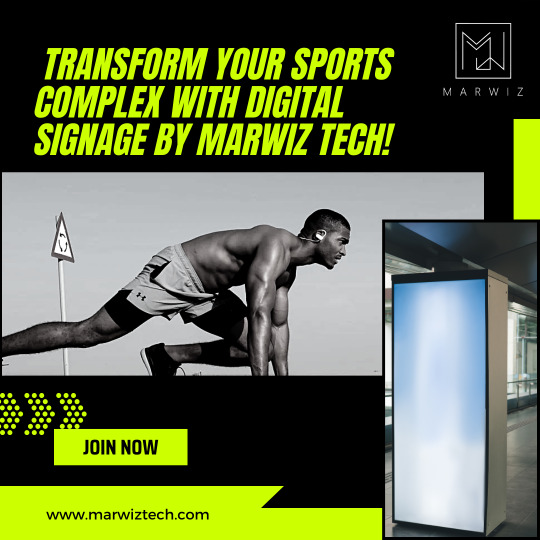
From real-time event schedules and live match scores to sponsor ads and emergency alerts — our AI-powered digital signage helps you run your sports complex like a pro.
0 notes